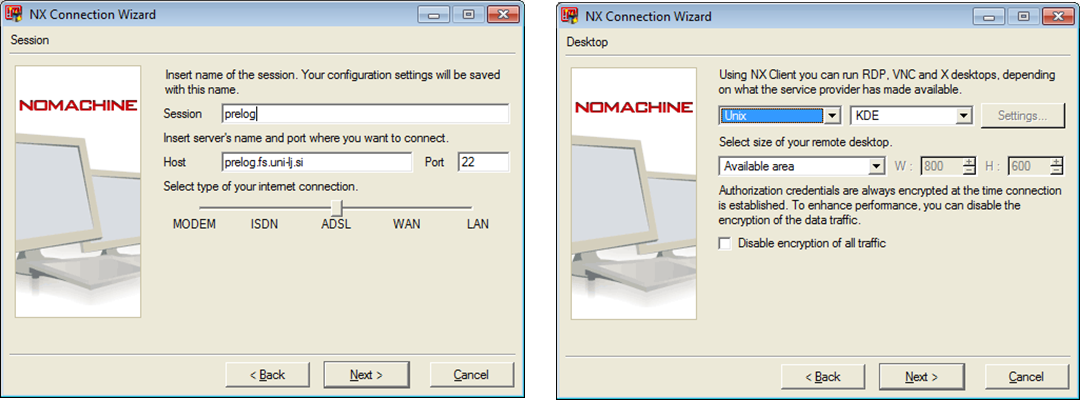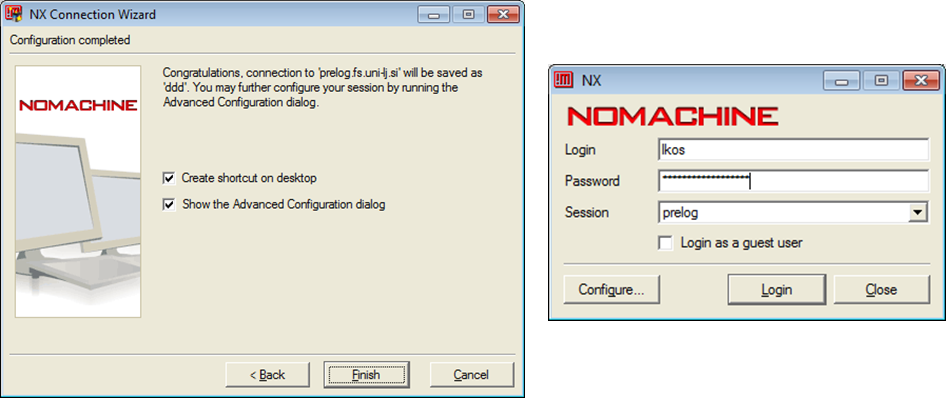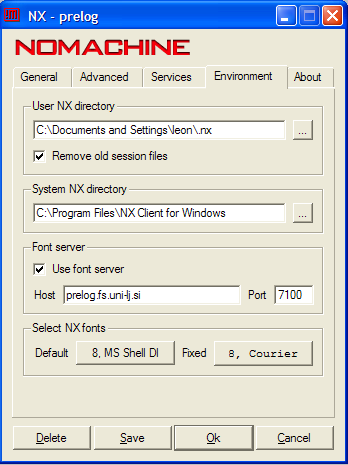- Predstavitev
- Uporaba
- Dostop
- Programski jeziki in knjižnice
- modules
- Nadzornik računskih virov SLURM
- TotalView
- VisIt
- IOzone test
- OpenFOAM
- ppgplasma
- Inkscape
- LaTeX in SVG
- Access
- Analiza, razčlenitev in razhroščevanje
- Ansys
- BIT1
- Cluster Management Utility
- DDT
- Eclipse
- Elmer
- Goldfire Innovator
- MPI
- Mathematica
- NX shadow
- OpenMP
- Platform Managment Console
- Pošta
- R
- Subversion
- UGS NX
- Projekti in dogodki
- Prijava
- Wiki
Main menu
Nahajate se tukaj
Access to HPC
Two-step access
- Click on the form and fill it out, print it, sign it, scan it and send it to dostop@hpc.fs.uni-lj.si or bring it in person to the FS dean’s office
- Click on the password and send the encrypted password to geslo@hpc.fs.uni-lj.si
Granting access
To access the supercomputer, it is necessary to obtain a username and password after the approval of the completed form from the website http://hpc.fs.uni-lj.si/access_eng. The completed form must be signed by authorized persons!
Users from the Faculty of Mechanical Engineering can use computational capacities within the framework of the rules avaliable on the general acts of the FS intranet under number 1.9 and 1.9.1. External users, who would like to use the computational capacities for their own purpose can rent computational capacities by agreement with the FS secretary dekanat@fs.uni-lj.si.
Granting access to this website only allows access to internal information for users and not to the composition of HPCFS itself!
HPC access requires approval of a completed form! When filling out the project form, at least write the program or code that you will use on HPCFS. You can write the username of your choice if the first letter of the name and surname does not suit you. Account termination is a mandatory field and is proposed by the user according to his/hers status and intended work.
The form can be approved by any head of the laboratory of the FS.
You can send the form by post or bring it to the faculty secretary. After granting access, it is necessary to have a reliable password and sent it encrypted to the manager.
Use the website http://hpc.fs.uni-lj.si/password to encrypt the password.
Once the account is approved and activated, you will recieve an automatic notification by mail to the address you provided in the form.
Questions can be addressed to support@hpc.fs.uni-lj.si
Ways of access
The supercomputer can be accessed by:
- Secure access by ssh console,
- NX client provides a remote desktop enviroment,
- X2go client with similar options as NX client,
- VNC or TeamViewer for a shared graphical desktop
The recommended method is with NX client, as it allows graphical access to login nodes and easier use of installed programs.




